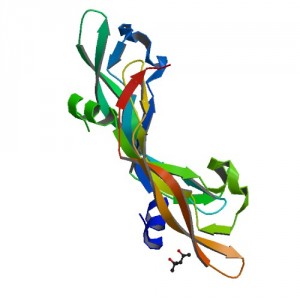TUESDAY, 14 SEPTEMBER 2010
A vital feature that maintains the structure and barrier function of the alveolar-capillary membrane is the pulmonary vascular endothelial cell. It is involved in coagulation, blood cell formation, and inflammatory responses; due to its exposure to blood, stress, and pathogens, the cell has specific mechanisms to reduce damage and maximize repair. It synthesises vasodilators such as nitric oxide, and therefore also regulates vascular tone. Responsible for the survival of this cell is vascular endothelial growth factor (VEGF), which is present at high levels in the adult lungs. This suggests that VEGF plays an important role in lung development and structure. In fact, it has been found that the VEGF mechanism is connected to numerous lung diseases.Other than being a survival factor for the endothelial cell, it is also a differentiation factor. Increased expression of VEGF has been correlated with tumour growth and diabetic retinopathy. It also participates in the progression of atherosclerosis, partly by increasing the aggregation of inflammatory cells. Moreover, as studied in pulmonary and coronary vasculature, it leads to a greater generation of vasodilators. In the systemic circulation, hypertension can consequently ensue. VEGF contributes to increased vascular permeability, inhibited endothelial cell apoptosis, and mobilised endothelial stem and progenitor cells. Progenitors are needed for repair, and when lacking, are connected to diseases such as coronary artery disease, hypertension, diabetes, and atherosclerosis. VEGF gene transfer and recombinant human VEGF treatment have proven effective solutions.
However, some disorders, including emphysema and hypertension, involve failure of the right ventricle. Scientists are now working on finding any effect VEGF could have on the right ventricle, as not much is known about its failure.
Written by Ayesha Sengupta

